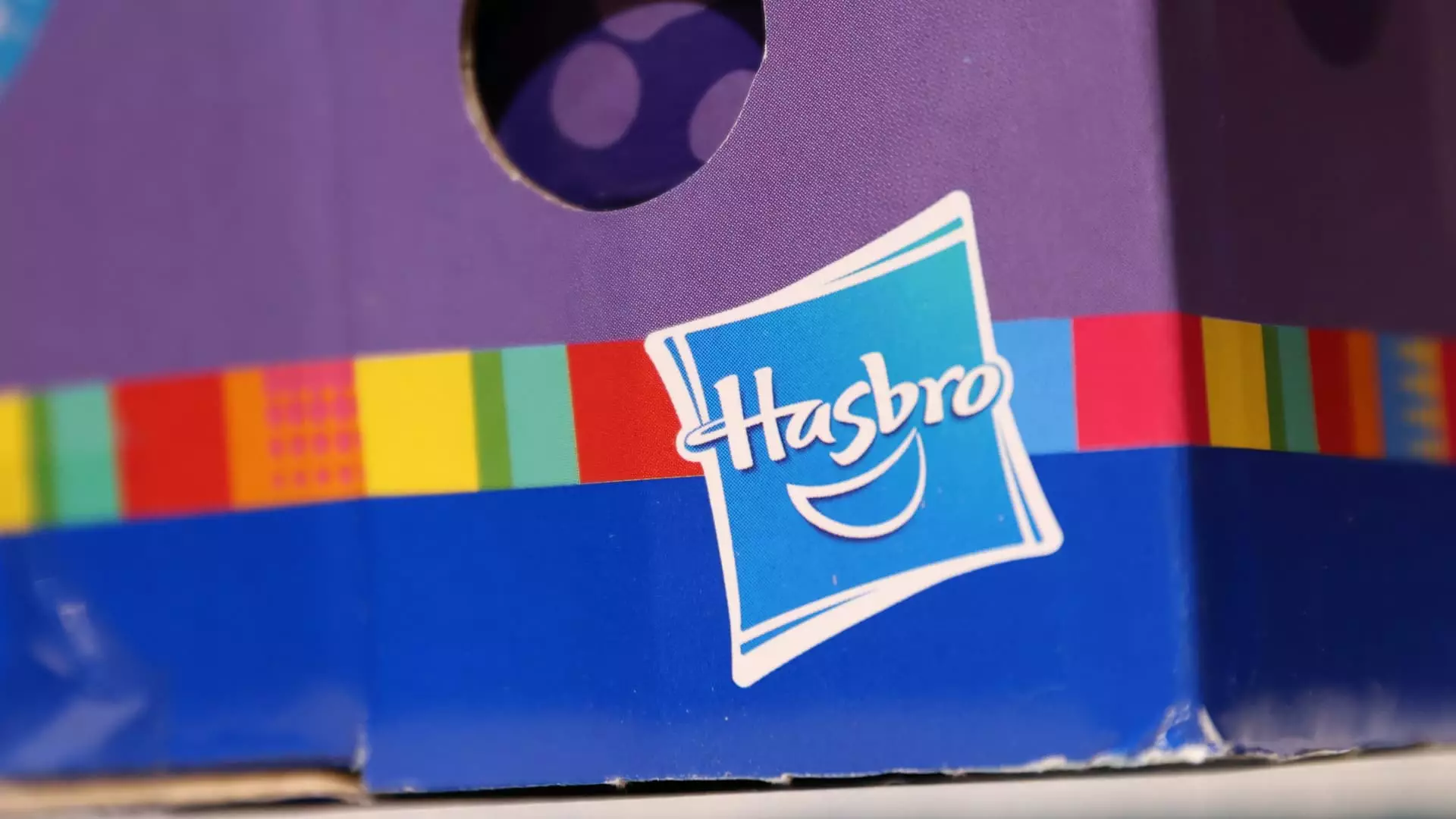Recently, Hasbro, the renowned toy and gaming powerhouse, addressed significant industry challenges during its fourth-quarter earnings call. Executives expressed a cautiously optimistic outlook towards the implications of U.S. tariffs on their operations. The company’s Chief Financial Officer, Gina Goetter, highlighted a pivotal strategic pivot: the gradual relocation of manufacturing operations away from China. This move comes as a direct response to changing economic conditions and trade policies, notably the tariffs imposed by the Trump administration.
Hasbro’s guidance for 2025 foresees a slight uptick in adjusted EBITDA, forecasting between $1.1 billion and $1.15 billion, which is a modest increase from $1.06 billion projected for 2024. This expectation not only considers the repercussions of tariffs on imports from China, Mexico, and Canada but also reflects the company’s proactive measures to stabilize their supply chain and adjust pricing strategies. Interestingly, Hasbro is reducing its reliance on Chinese production, aiming to lower the percentage of U.S. toys sourced from China from 50% to below 40% in the next two years. This strategy underscores a growing trend among companies to diversify their manufacturing bases in the face of rising costs and international trade tension.
The toy industry, characterized by intense competition, has seen other giants, such as Mattel, hint at potential price increases for popular products like Barbie and Hot Wheels due to similar tariff pressures. As Hasbro navigates this landscape, it aims to weather the impending challenges by leveraging its robust supply chain and staying competitive with pricing. CEO Chris Cocks shared insights on industry performance, predicting “flattish” growth overall, yet remaining optimistic about specific sectors like trading cards and building blocks, which are expected to thrive despite external pressures.
One of the standout aspects of Hasbro’s performance lies in its licensing business, which serves as a crucial margin driver and appears largely insulated from tariff turmoil. This segment has provided a buffer against the dips experienced elsewhere in the company’s portfolio, and Cocks emphasized its resilience and importance in their overall business strategy.
As Hasbro disclosed its fourth-quarter performance, results showed both strengths and challenges. Analysts had anticipated a strong showing, and Hasbro exceeded expectations with adjusted earnings per share of 46 cents against a backdrop of foreseen losses. Revenue for the quarter was reported at $1.1 billion, surpassing previous forecasts. Yet, it’s essential to contextualize this optimism: the revenue reflects a 15% year-over-year decrease, indicative of broader industry struggles and the company’s recent decision to divest its eOne film and television arm.
The figures exposed an underlying trend, where excluding the effects of the eOne sale, revenue would have only faced a 7% decrease rather than the more dramatic 17% across the board. This context is vital in understanding not just the numbers but the overall health of Hasbro, which has increasingly leaned into digital and licensed gaming avenues.
In fact, the digital gaming sector showcased robust growth, with revenues rising 35% in the fourth quarter compared to the previous year. The success of mobile games like Monopoly Go! illustrates a successful pivot towards digital engagement, capitalizing on changing consumer behaviors in gaming.
In a forward-looking move, Hasbro announced a licensing partnership with Mattel, launching a line of Play-Doh Barbie products. This collaborative venture signals a creative synergy designed to tap into the dual fan bases of both brands, allowing children to engage creatively by designing fashion elements using Play-Doh. Such innovations not only keep the brand relevant but also diversify their product offerings to adapt to changing market preferences.
In summation, while Hasbro faces a myriad of challenges from tariff-induced pressures to market fluctuations, the company’s proactive measures in manufacturing realignment, focus on digital gaming, and strategic collaborations position it favorably for future growth. How effectively Hasbro can execute these strategies while addressing shifting market dynamics will determine its trajectory in the coming years. With a mix of guarded optimism and strategic pivots, Hasbro is navigating a complex landscape that could redefine its position in the toy and gaming industry.

